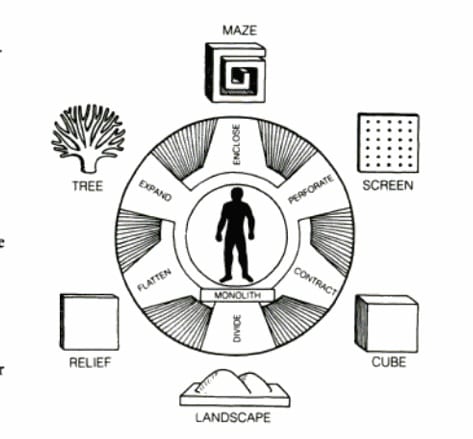Ahmrii Johnson
Notes
As the engineering of sculptural materials continues to progress architects and artists find further innovative inspiration from the designs of cityscapes, highways, and bridges. Steel is the prime material for extension because of its tensile strength. The step from materiality to immateriality replaces steel with light. Forms that result when branches of an open treelike sculptures are closed in, such as the box, has interested many sculptors of our day. In the past artists had limited resources and had to extend the creative form of a particular material in it fullest way. Today artists have a variety of materials readily available for them to perform projects with. The Form Wheel is a device that displays seven different types or families f forms, arranged with six forms in a circle and one in the center. The six outer families are symbolized by the Maze, the Screen, the Cube, the Landscape, the Relief, and the Tree. In addition, there are six ways to form including, enclosure, perforation, contraction, division, flattening, and expansion. The center of the wheel feature the figure of a human, representing the Source form. the most common of all sculptural forms, the Monolith.
Questions: What constitutes materiality and immateriality? Has the surplus of available resources and materials affected the extension artists can now challenge their creativity?

